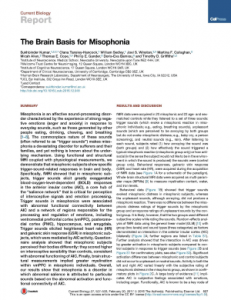 Sequent Repatterning has been developed specifically to provide effective therapy for those having misophonia. It is a therapy framework that begins with a Pre-therapy Phase and moves through a Foundation Phase and into Active Therapy. It is practised by a small community of committed therapists, all of whom have demonstrated their ability to provide effective changework for those having misophonia.
Sequent Repatterning has been developed specifically to provide effective therapy for those having misophonia. It is a therapy framework that begins with a Pre-therapy Phase and moves through a Foundation Phase and into Active Therapy. It is practised by a small community of committed therapists, all of whom have demonstrated their ability to provide effective changework for those having misophonia.
First: a few words about misophonia
Misophonia means hatred of sound (From the Greek miso meaning hate, with the object of hate following, phonia which means sound.) When the name misophonia was first coined it was thought the condition was a response to only human-produced sounds. That was extended to any repetitive sounds. Soon it was noticed there were instances when visual experiences, often alongside auditory events, caused an uncomfortable reaction. Since then it has been established that misophonia is not simply a condition of the auditory senses: it is a neurological condition that can include any or all of the five physical senses.

DSM-I appeared in 1952 and catalogued 106 conditions. By 1980 DSM-III had grown to 265 and the following revision known as DSM-IV featured 297. Before the current DSM-V appeared the chair of the DSM-5 task force, David Kupfer, announced that the total number of disorders in DSM-5 will not increase. That suggests that seeing misophonia having its own entry is unlikely.
A Brain Basis for Misophonia
Well-conducted research followed by peer-reviewed publication shows us that there is clearly a brain-basis for misophonia, although the study by Kumar and his colleagues focused only on individuals’ responses to auditory stimuli. (The article published in Current Biology during 2017 can be accessed here.)
This study clearly shows that circuits in the brains of those having misophonia – their neural networks, that is – are connected in ways that promote the symptoms of this condition in response to certain sensory events. But contrary to statements made that “there is no cure for misophonia,” we know that neural circuits can be updated through the process of the brain’s natural plasticity. And appropriate processes that carefully manage a person’s experiences and responses can bring about fundamental, positive changes.
This means that relief for those having misophonia is not restricted to finding ways to cope better, or simply withdrawing from the world. Treating the symptoms – reducing and removing them – is a natural and effective option. An option which is founded in solid neuroscience and neuropsychotherapy.
What is Sequent Repatterning?
Treatment for misophonia.
Sequent Repatterning is a therapeutic framework. It approaches treatment of misophonia in three stages: a pre-therapy phase, a foundation phase and an active therapy phase. Usually pre-therapy consists an initial discussion and diagnostics, assessment and an individual’s opportunity to understand the process and its potential. Including the foundation session, the therapy process itself is usually planned over eight sessions, often at weekly intervals, with activities between the sessions.
Sequent Repatterning is not a rigid protocol but a therapeutic framework utiliising aspects of deep relaxation and proven psychotherapeutic techniques. The deep relaxation is usually achieved using clinical hypnotic induction. For this reason the therapy is sometimes referred to as Sequent Repatterning Hypnotherapy.
This therapy is called sequent because it is a contiguous series of steps, each building on the previous interaction between client and therapist and, itself, paving the way for the next. It is called repatterning because it doesn’t simply create a new pattern, a new neural network that is, alongside the old. It doesn’t just remove the unwanted pattern, either. It replaces the established, uncomfortable pattern with one that is better.
Your therapist will always explain at each step in the process what will be done, what it is intended to achieve and how it will happen. Sequent Repatterning is an integrated, effective and proven treatment for misophonia: developed to work on the symptoms of misophonia. It is not just about managing better or finding coping mechanisms. Sequent Repatterning can bring about positive, permanent change in a person’s experience.
There is a Sequent Repatterning web site.

